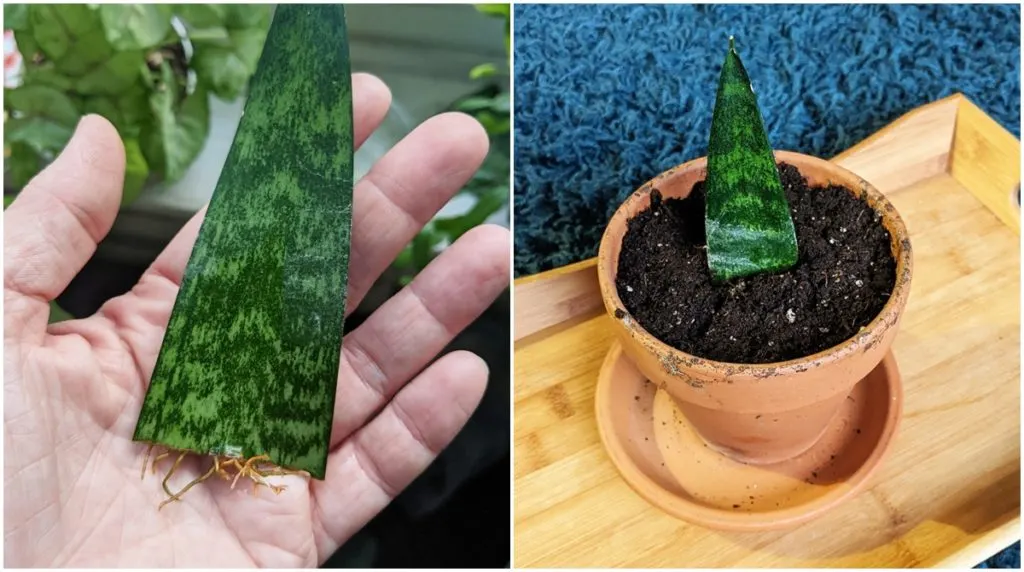
The snake plant is one of the most popular houseplants because it is easy to care for and how dramatic and showy it is.
Dracaena trifasciata is most commonly known as snake plant but the plant has a few more colorful monikers including mother-in-law’s-tongue and Saint George’s sword to name a few.
The plant comes by these names due to its elongated leaves resembling a sword or, ahem, sharp tongue.

The snake plant is native to West Africa, but much of the world enjoys it as a common houseplant. Before it made its way across the world, it was used to make bowstrings with its tough plant fibers. Dracaena trifasciata is an important spiritual plant in West Africa, where it is used in rituals and to signify spirits.
The snake plant is an excellent first plant for those getting into houseplants.
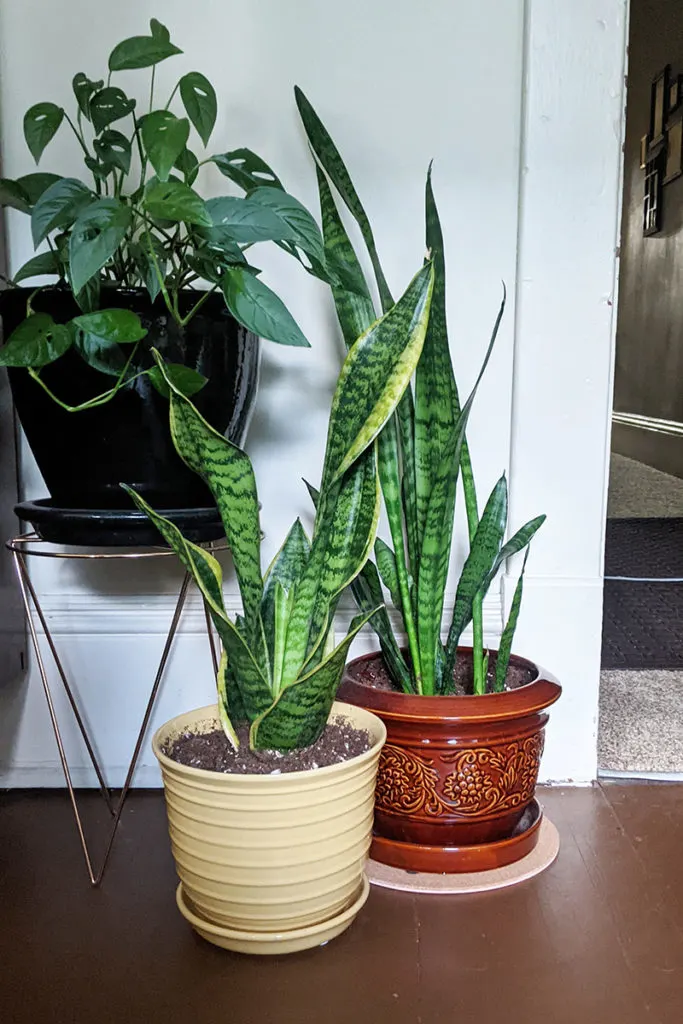
These long and stately plants are one of the true low-maintenance houseplants. They prefer bright indirect sunlight. Placing them where they will get plenty of sun means they will grow well. However, they can still do well in areas of your home that get less light; they will just grow much slower.
For even more low-light houseplant options you’ll want to read – 12 Beautiful Low-Light Houseplants
And when it comes to watering them, few and far between should be your motto. Too much water and the roots easily develop root rot.
Do you forget to water your plants? Then the snake plant is for you.
When choosing a potting soil, nearly any commercial potting mix will do, but a cactus mix is the best option. These long-lived plants really aren’t picky. As long as your pot has a drainage hole in the bottom, with well-draining soil, you’ll have a happy snake plant.
Another great thing about snake plants is how easy they are to make more.
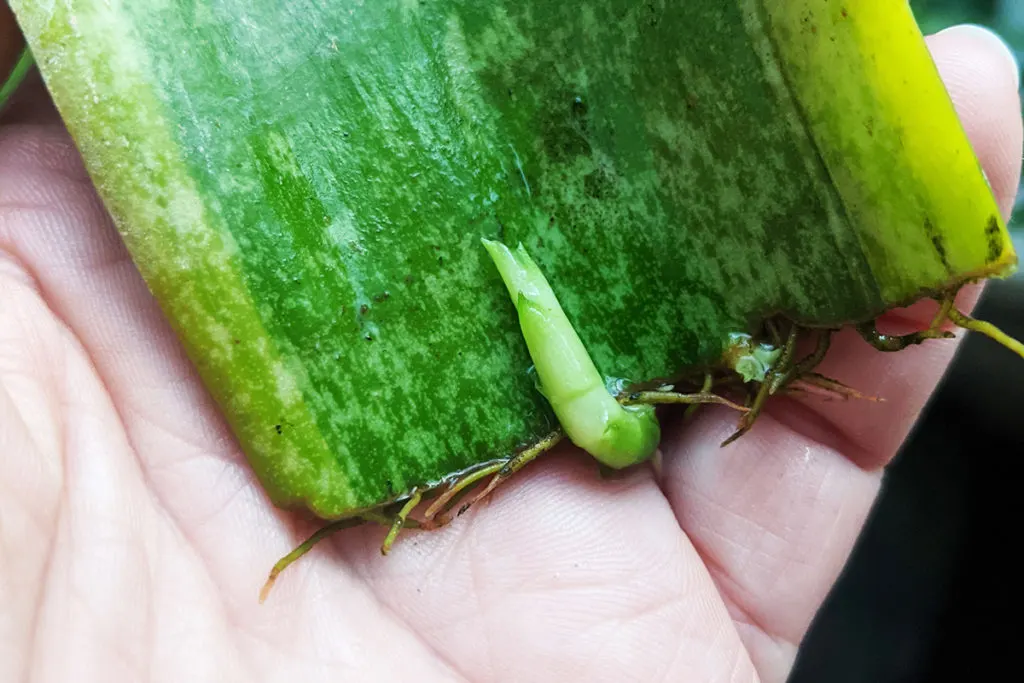
Propagating snake plants is incredibly easy, and you can do it in several different ways. It’s one of those plants that I always have propagating on my kitchen windowsill.
There are four ways to propagate snake plants, and I’ll walk you through each method so you can choose which works best for you. Although you may find yourself using all four over the life of your plants.
1. Propagate Snake Plant Pups
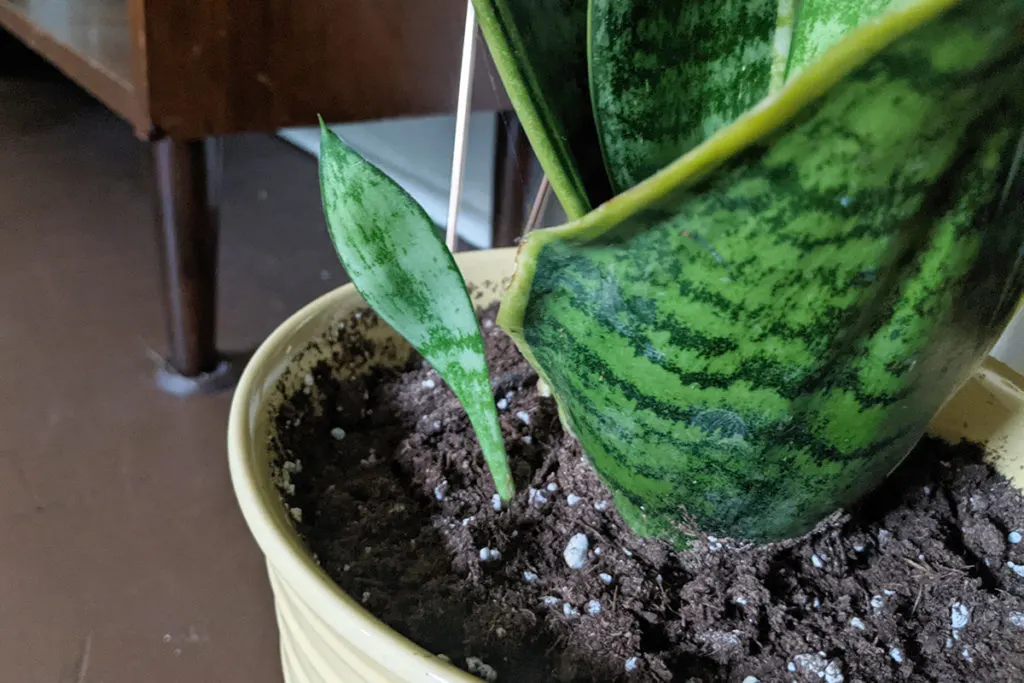
One of the easiest ways to propagate Dracaena trifasciata is simply taking good care of your plant. Soon enough, you’ll notice tiny pups springing up at the base of the main plant.
Some suggest pulling the entire plant to remove pups, but that’s too much fuss for me and the plant. Instead, use a clean and sterile knife to gently slice the new pup away from the main plant down through the dirt. Once cut, the pup will easily pull up out of the soil.
You should let the freshly cut snake plant pup callous over for 24 hours and then plant it in a new pot of cactus soil. Place your pup or pups in a sunny location and watch them grow.
2. Dividing Snake Plants
This is probably the second easiest way to propagate snake plants. It’s certainly the quickest way to get more.
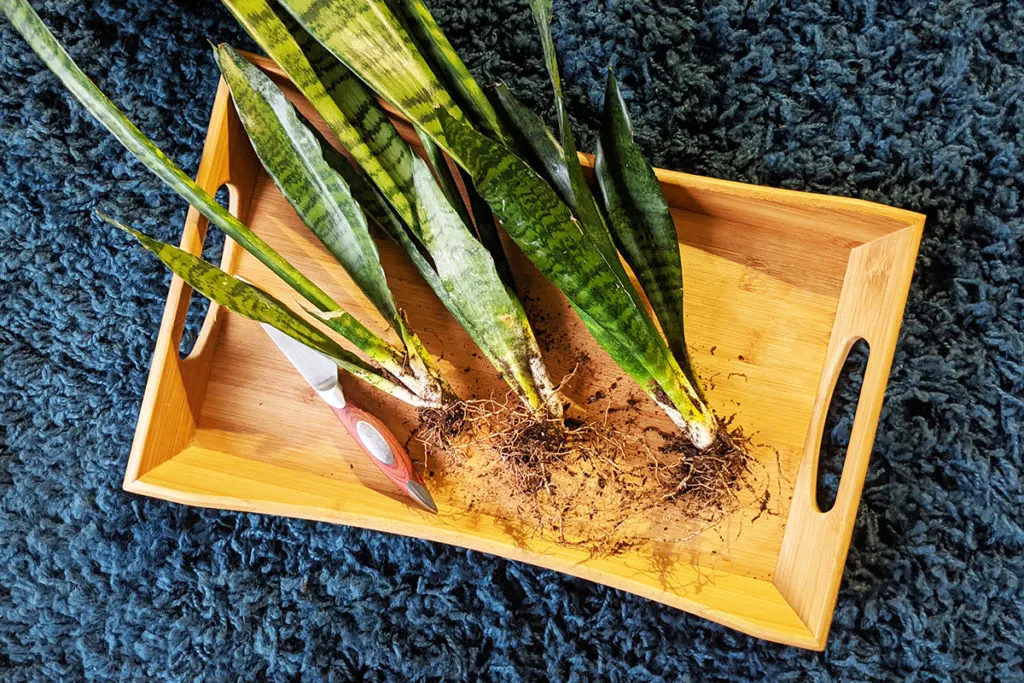
To divide your plants, you’ll need to remove the entire thing from the pot. Shake the excess soil away from the rhizomes (root system). Place the plant down on a flat surface, like a cutting board, and with a sterile knife cut down through the base of the plant and the rhizomes.
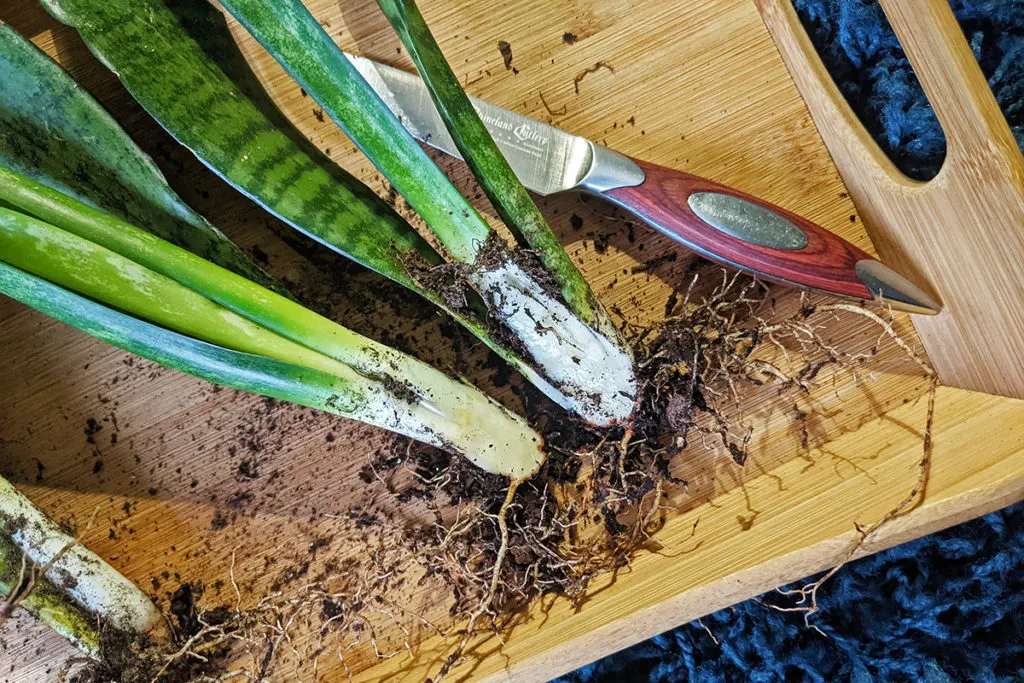
Don’t worry about cutting into the plant. They’re incredibly hardy, and this won’t harm the plant. Let the new cuttings callous over for 24 hours before repotting them in new pots.
3. Propagate Leaf Cuttings In Water
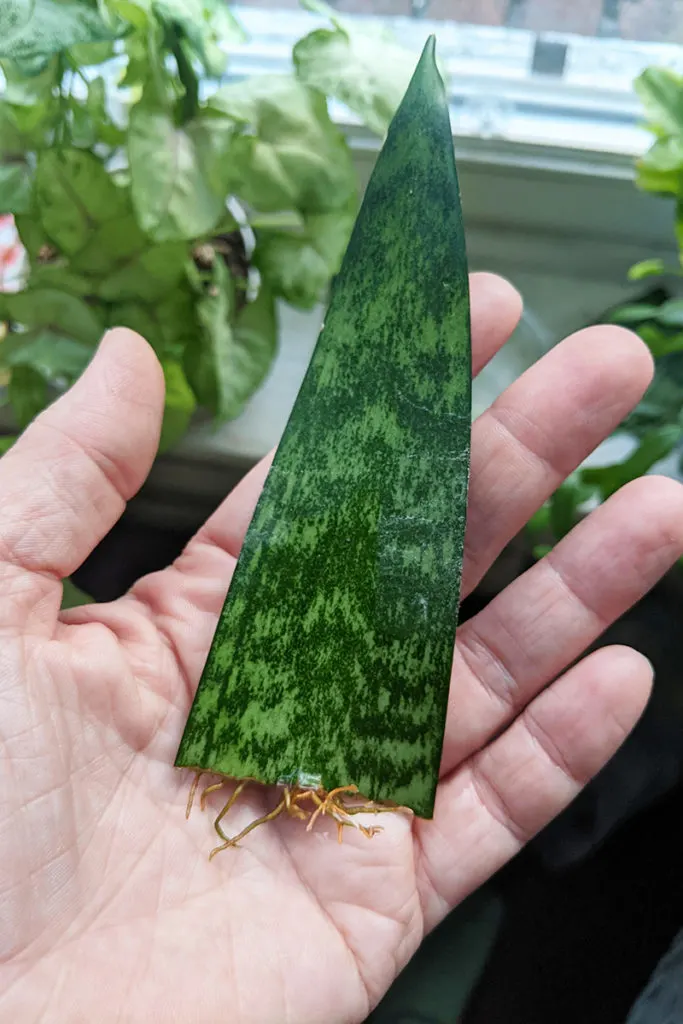
Like so many other houseplants, you can propagate snake plants through leaf cuttings. The neat part about propagating snake plants this way is how many new plants you can get from just one long leaf.
To make leaf cuttings, cut away one large leaf at the base of the plant using your sterilized knife. Now slice the leaf into 2 to 3” cuttings, cutting horizontally across the leaf. Then you’ll need to decide if you wish to propagate them in water or soil.
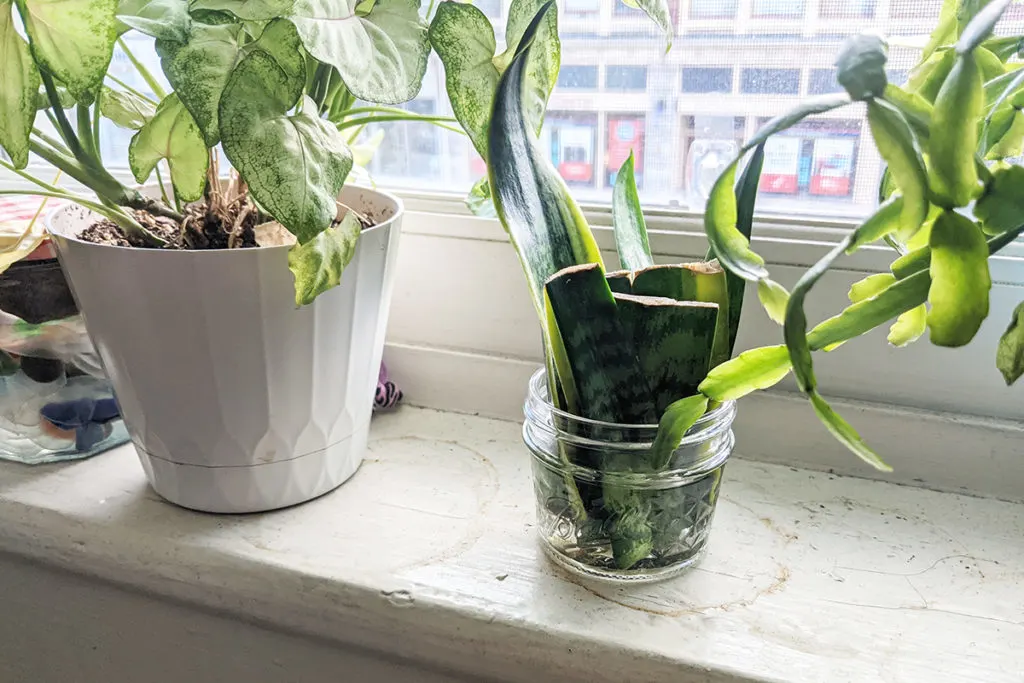
I know soil propagation takes a little less time, however, I prefer being able to see whether or not my cuttings are actually making any new roots or not. Once you put your leaves in the soil, it’s a waiting game.
Place the leaf cuttings, cut-side down in a jar of water. You’ll want the water to cover the bottom third of the cutting.
Place your cuttings in a sunny window and top up their water as needed. Do a complete water change every couple of weeks to prevent anything funky from growing.
You may also wish to inoculate the water with mycorrhizae to encourage strong and plentiful root growth. Read up on the benefits of these helpful fungi – Why You Should Add Mycorrhizae To Your Soil – Stronger Roots & Healthier Plants
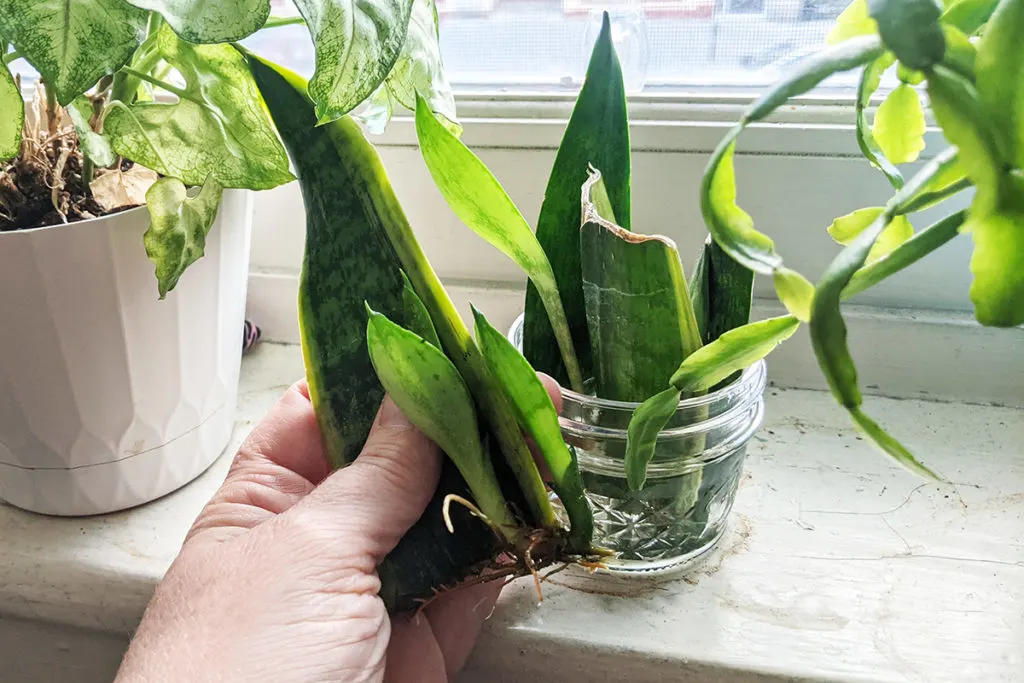
Once you have roots at least an inch long or new pups sprouting off the old cuttings, you can repot them into new pots.
4. Propagate Leaf Cuttings In Soil
If you plan on propagating via soil, you’ll need to let your cutting callous over for 24 hours. Once you’ve done that, you simply poke the cuttings into the soil, covering half the leaf, cut-side down. Water them in and then sit back and wait.
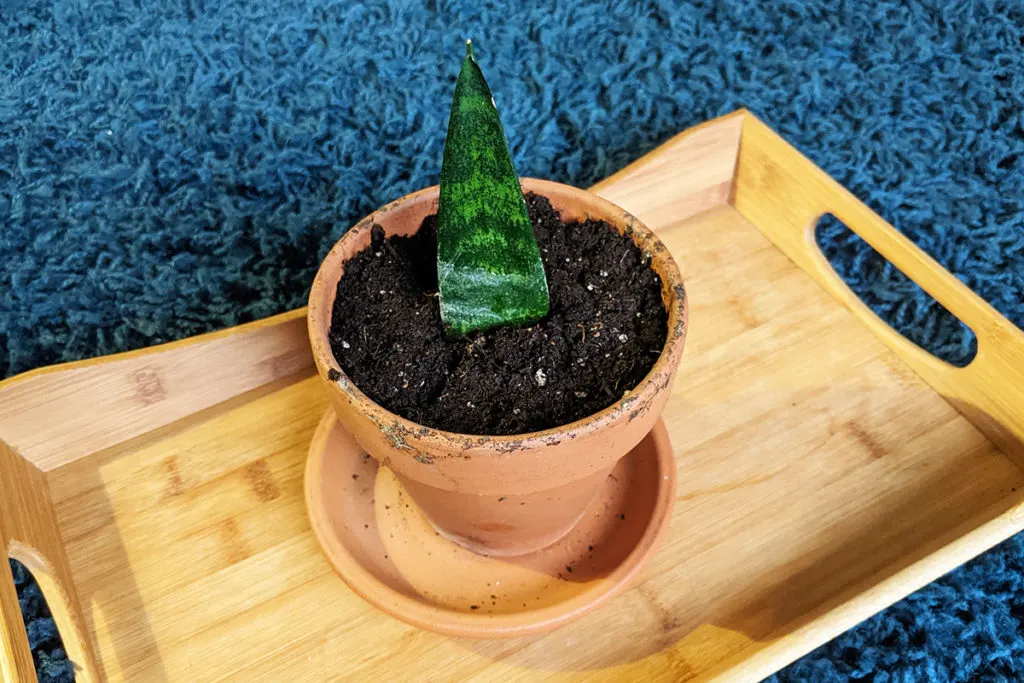
Again, I’m a huge advocate for using mycorrhizae when propagating. Innoculate your new cuttings and watch them grow.
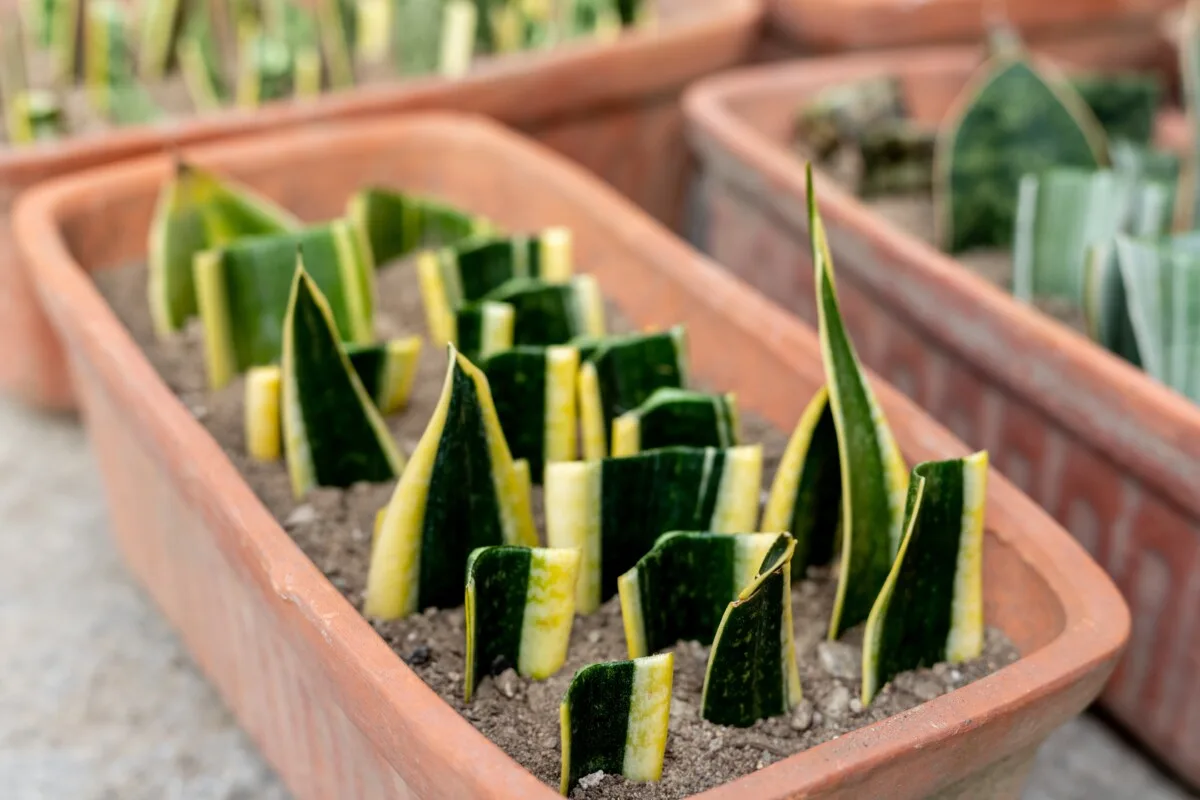
Propagating by leaf cutting is easy to do but can take a couple of months to see new growth. It’s important to be patient.
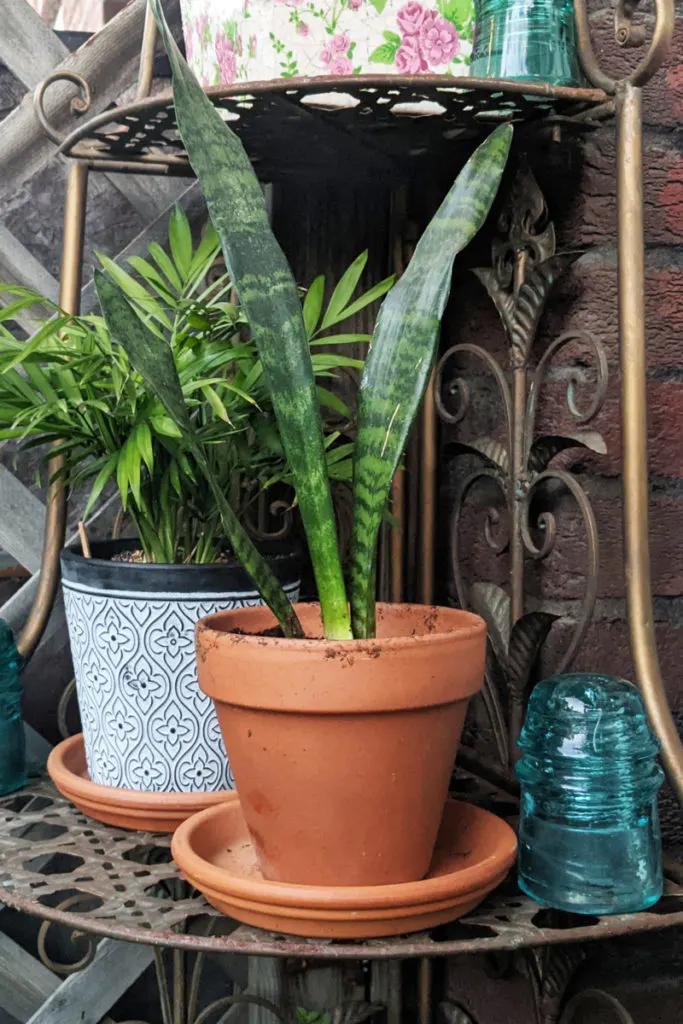
Propagating snake plants is a great way to gain new stock without spending a dime. And because it’s such a great plant that anyone can care for, you’ll have plenty of new snake plants to give out to friends and family.
Looking to increase your houseplant stock? Why not learn how to propagate your succulents, your Aloe vera from pups, or your Christmas cactus.

Get the famous Rural Sprout newsletter delivered to your inbox.
Including Sunday ramblings from our editor, Tracey, as well as “What’s Up Wednesday” our roundup of what’s in season and new article updates and alerts.

